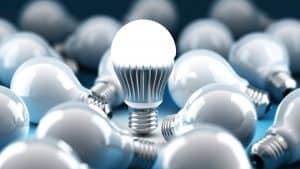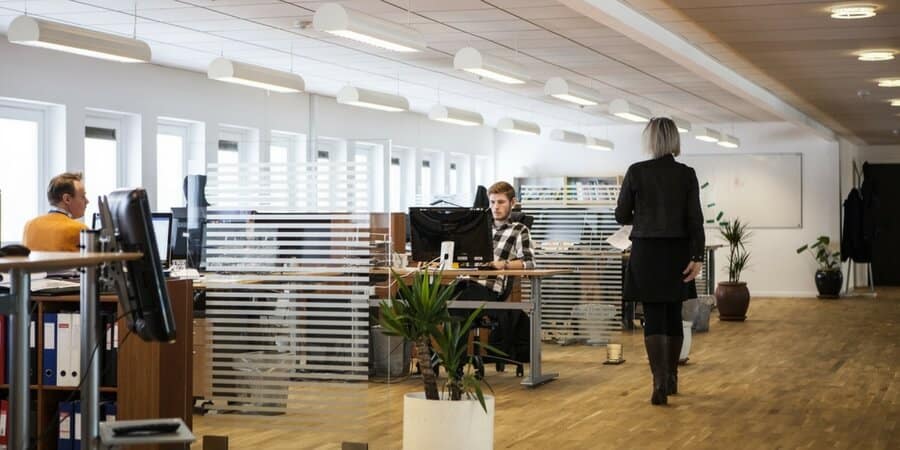The Ultimate Checklist to Increasing Your Office’s Energy Efficiency
By Beth Rush
Any business leader wanting to know how to make their office more energy-efficient stands to gain more than cutting overhead costs. An energy-efficient office can help your company develop a sustainable brand to attract green-minded investors and talent. Consuming less electricity and fossil fuel than needed makes it easy to qualify for environmental, social and governance certifications, build resilience to climate change, and comply with ever-changing regulations.
Conserving energy in the office can be done without spending a fortune. However, the most impactful measures may require capital and involve renovating space design elements and remodeling specific building parts. Your energy efficiency checklist must include these eight initiatives to reap sustainability’s tangible and intangible benefits.
Embrace Passive Solar
Passive solar means harnessing the sun’s free energy to heat or cool indoor spaces. The primary goal is to rely less on artificial heating and cooling methods, although some mechanical devices play vital roles in these systems.
Workplaces in colder climates can use passive solar heating designs to absorb and store thermal energy during the day and distribute it at night using blowers, ducts and fans. Those in warmer regions can use passive solar cooling designs to minimize unwanted solar radiation, use the night’s coolness to lessen daytime temperatures and utilize natural air movement to vent heat outside.
Have a skilled architect evaluate your building. This professional will propose modifications to achieve your energy efficiency objectives using the five passive solar elements — control, aperture, thermal mass, absorption, and distribution.
Maximize Natural Light
Lighting accounts for about 17% of the electric consumption of commercial buildings In the United States. Using zero artificial illumination sources during the day by tapping abundant sunlight will move the needle toward sustainability.
Enlarging existing windows and installing skylights to let in more sun can only do so much. Incorporate elements in office design that can reflect light, allowing it to penetrate deeper into your space. Using a bright color scheme, swapping bulky furniture for slim pieces and switching to pale wood are effective tactics to boost light reflection indoors.
Upgrade to Light-Emitting Diodes (LEDs)
 How can you make offices more energy-efficient when using artificial lighting? Retire old-fashioned bulbs and lamps and graduate to LEDs.
How can you make offices more energy-efficient when using artificial lighting? Retire old-fashioned bulbs and lamps and graduate to LEDs.
These semiconductor devices emit minimal heat and convert most of the electricity they consume into illumination. Besides being more energy-efficient, LEDs are environmentally sound across the board, for they’re longer-lasting and more versatile than incandescents and fluorescents.
Use Task Lighting
LED desk lamps illuminate individual work areas, increasing visibility at night without lighting up entire office sections or floors.
Put a premium on ergonomics. Desirable features, such as tiltable shades and adjustable necks, enable employees to achieve proper placement and manipulate light direction as they see fit to minimize glare and reflections.
The ideal desktop lighting is 3,000 degrees Kelvin warm and 1,500 lumens per square meter. Consider these figures when comparing products to buy suitable lights.
Ditch Inefficient Machines
Appliances — such as furnaces, air conditioners, computers, printers, fax machines, water coolers, fridges, microwaves and toasters — are the unsung workhorses in the office. However, older units work hard while accomplishing less.
Replace inefficient office appliances — even when they function properly — with modern equivalents to lower your electricity usage. Retirement ages vary by machine. Check how many years a particular item needs to spend in service before getting labeled outdated. Donate your old essentials to others or take them to recycling centers to get new leases on life.
Adopt Occupancy Sensors
These devices monitor space usage. They can detect human presence through heat, vibrations or motion. This way, they can automatically turn on lights when someone walks into a room and switch them off when the person leaves.
Moreover, occupancy sensors can also talk to the centralized heating, ventilation and air conditioning system to adjust temperatures accordingly. Some units only power off lights by design to avoid wasting energy due to false positives and allow building occupants to use artificial light when desired.
Install Adequate Insulation
Unchecked heat transfer offsets the benefits of having a passive solar building design, LED lights, energy-efficient appliances and occupancy sensors. Insulating walls and ceilings traps heat and conditioned air inside the building, allowing you to maintain your desired comfort levels without using too much power.
Insulation serves a dual purpose. Strong, thick insulating barriers have soundproofing properties that block loud sounds from airborne and impact sources. Combining insulation with a thoughtful office layout will make your workplace more sustainable and quiet.
Eliminate Phantom Loads
Make it a habit to unplug unused electric and electronic devices. Gadgets and appliances continue to draw power when in standby mode or turned off. Phantom loads refer to such electricity usage.
Phantom loads are negligible but can noticeably inflate your electric bills when added up. Aside from unplugging devices when not in use, buying smart plugs and power strips and maximizing energy-saving settings can reduce these vampires’ impact.
Let Your Office Work Optimally With Less Energy
Understanding how to make offices more energy-efficient is only half the battle. You must address the technical and behavioral aspects of electric consumption. Teach your employees eco-friendly practices and give them regular reminders. Most importantly, encourage them to behave accordingly even when no one’s looking to foster a sustainable corporate culture.
About the Author: Beth Rush is the green wellness editor at Body+Mind. She has more than five years of experience writing and editing articles covering topics like sustainable transit and the importance of green spaces in urban planning. You can find Beth on Twitter @bodymindmag.
Subscribe to Body+Mind for more posts by Beth!
